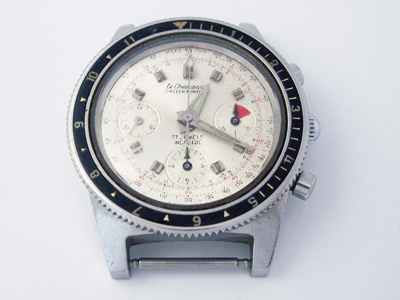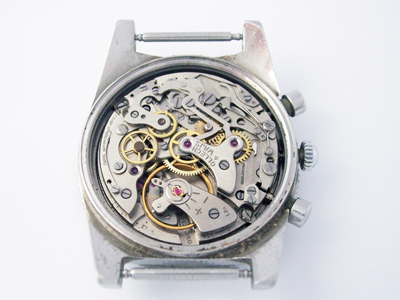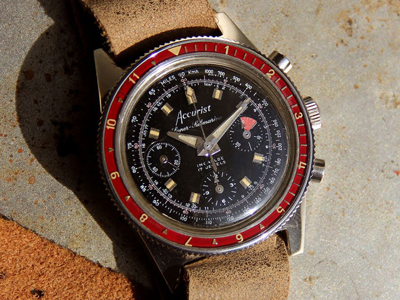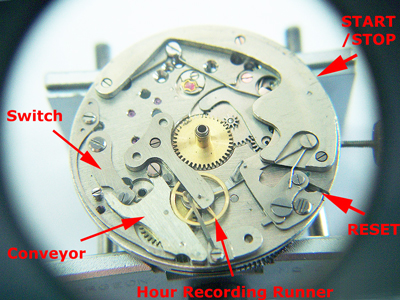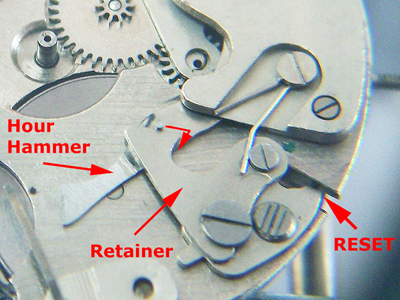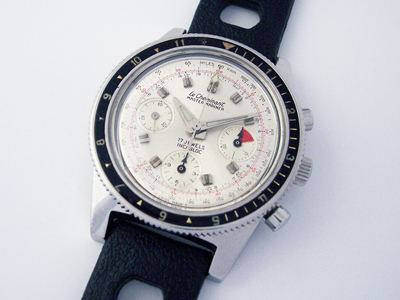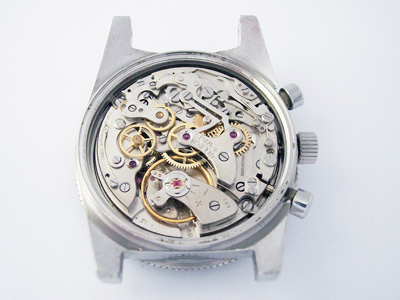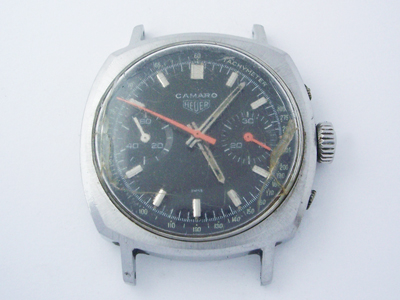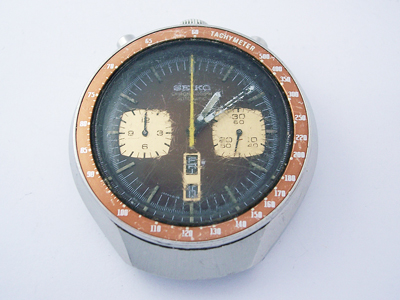Another chronograph from somewhat of a hidden gem among vintage brands, Le Cheminant.
(Click pictures to enlarge)
Regular readers may recognise the name Le Cheminant as I’ve written about a couple of their watches in the past; the restoration of a Valjoux cal. 92 powered chronograph last year (that post here) and another back in 2013 which included a history of the brand for any interested parties (here).
Aside from being a great looking chronograph, the subject of this post was of interest due to the calibre inside, a Landeron cal. 349.
Though Landeron powered chronographs are quite common with more than 3.5 million units having been made between 1937 and 1970, the cal. 349 is something of a rare bird as it was only made in small numbers near the end of the production cycle.
While there are no ‘classic’ cal. 349 powered chronographs the calibre was used by several brands, the most recognisable being Difor, Jenny, Ollech & Wajs and Baylor. Accurist also used the cal. 349 in their near identical and superbly titled “Super-Submarino”.
The cal. 349 is effectively a cal. 149 with an added 12 hour register for the chronograph. The jewel count and beat rate are the same, 17 and 18,000 bph respectively, as is the pusher configuration; the top pusher controlling the start and stop functions and the lower pusher the reset. The more commonly seen 48, 51, 148 and 248 calibres were designed such that the top pusher starts that chronograph and the lower pusher is used for both the stop and reset functions.
There is very little technical information about the cal. 349 available online and I couldn’t find any pictures of the dial side components, so let’s have a closer look at the calibre with the dial removed.
Like most 12 hour chronographs, the hour register is powered directly from the mainspring barrel, in this case via a conveyor. When the chronograph is engaged, the switch releases the conveyor which meshes with the hour runner and starts to record the hours. At the same time, the hour hammer under the hour recording runner must be released as described below.
When the start button is pressed the hour hammer is lifted away from the reset heart on the hour recording runner, the mounted pin following the path of the arrow until it clicks into the holding position behind the hook on the retainer. The chronograph can now be started and stopped as many times as is required.
When the reset pusher is pressed, the pin is released from behind the hook on the retainer and being spring loaded, the hour hammer moves back across, contacts the heart on the hour recording runner and resets the hour register back to zero. Simple, but effective.
Overall, the watch arrived in decent condition. Still in possession of the original owner who received the watch as a gift in 1968, it unfortunately found its way into a drawer around 20 years ago after an unsuccessful repair.
The movement was in good condition with no sign of moisture damage or heavy wear so a routine service was all that was needed to get it back up and running. The crown was an obvious replacement and a poor match for the case so that was replaced, as was the crystal and caseback gasket which were both well past their best.
With the movement serviced, case cleaned and the new components fitted, the watch was ready for action once again.
Rich.
** Many thanks to Dave Hackney for letting me feature his watch on the blog. **

